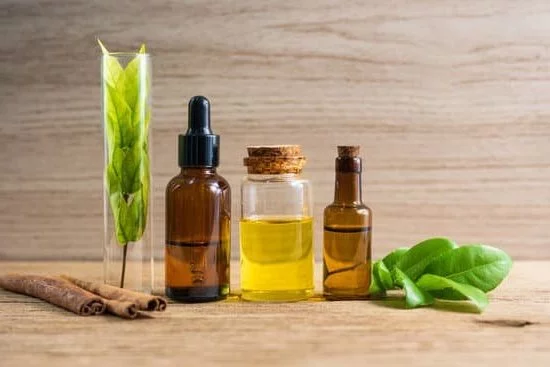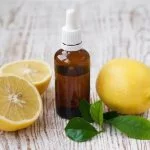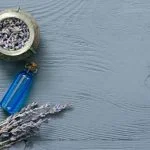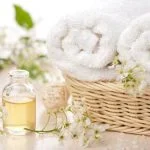Are you looking for natural ways to treat mycosis? In this article, we will explore how to treat mycosis naturally with aromatherapy. Mycosis, a fungal infection that affects the skin, nails, and other body parts, can be effectively managed with the use of aromatherapy. This holistic approach harnesses the power of essential oils to combat fungal infections while promoting overall well-being.
Mycosis is a common condition caused by fungal overgrowth, leading to symptoms such as itching, redness, and discomfort. While conventional treatments are available, many individuals seek natural alternatives to manage mycosis. Aromatherapy has been gaining recognition for its therapeutic benefits in treating various health conditions, including fungal infections. In this section, we will delve into the benefits of aromatherapy as a natural treatment for mycosis and explore its efficacy in promoting healing and relief.
The use of essential oils in aromatherapy has been found to be effective in treating mycosis due to their antifungal properties. Certain essential oils have demonstrated strong antifungal activities that can help combat the fungi responsible for causing mycosis.
The application of these essential oils through aromatherapy offers a gentle yet potent approach to addressing fungal infections while minimizing side effects often associated with conventional treatments. Throughout this article, we will provide a comprehensive guide on essential oils suitable for mycosis treatment and practical tips on incorporating aromatherapy into your daily routine for optimal results.
Exploring the Benefits of Aromatherapy for Treating Mycosis
Aromatherapy has been used for centuries as a natural treatment for various health conditions, including fungal infections like mycosis. The use of essential oils in aromatherapy can provide numerous benefits in the treatment of mycosis, offering a gentle and non-invasive approach to managing this common condition.
Benefits of Aromatherapy for Treating Mycosis:
- Antifungal properties: Many essential oils have powerful antifungal properties that can help combat the fungi responsible for mycosis. Some of these essential oils include tea tree oil, oregano oil, lavender oil, and peppermint oil.
- Anti-inflammatory effects: Mycosis often leads to inflammation and irritation of the affected skin or nails. Certain essential oils have anti-inflammatory properties that can help reduce redness, swelling, and discomfort associated with mycosis.
- Calming and soothing effects: Dealing with mycosis can be stressful and uncomfortable. Aromatherapy can offer emotional support by promoting relaxation and reducing anxiety.
Using aromatherapy to treat mycosis naturally involves harnessing the power of essential oils through various methods, including inhalation, topical application, and even oral ingestion (under the guidance of a qualified aromatherapist). It’s important to note that while aromatherapy can be beneficial in managing mycosis, it should not replace medical treatment prescribed by a healthcare professional.
By understanding the benefits of aromatherapy for treating mycosis, individuals can explore this natural approach to complement their existing treatment plan and promote overall well-being. Incorporating aromatherapy into a holistic approach to managing mycosis can provide added relief and contribute to a sense of physical and emotional balance.
Essential Oils for Mycosis Treatment
When it comes to treating mycosis naturally with aromatherapy, essential oils play a crucial role in providing relief and supporting the healing process. These oils are derived from plants and contain potent antifungal properties that can effectively combat fungal infections in the body. Here is a comprehensive guide to some of the best essential oils for mycosis treatment:
1. Tea Tree Oil: Known for its powerful antifungal, antibacterial, and anti-inflammatory properties, tea tree oil is a popular choice for treating mycosis. It can be applied topically to the affected area after diluting it with a carrier oil such as coconut or olive oil.
2. Lavender Oil: In addition to its calming and soothing effects, lavender oil also possesses antifungal properties that make it effective in treating mycosis. It can be diluted with a carrier oil and applied directly to the affected skin.
3. Oregano Oil: Oregano oil contains high levels of carvacrol, a natural compound with strong antifungal properties. This makes it an excellent choice for combating mycosis when used topically. However, oregano oil is potent and should be diluted before application.
4. Peppermint Oil: The menthol component in peppermint oil has been found to have antifungal activity, making it beneficial in managing mycosis symptoms. It can be diluted and applied to the affected area for relief.
Using these essential oils as part of an aromatherapy treatment plan can help alleviate discomfort and promote the healing of mycosis naturally. Always remember to perform a patch test before using any new essential oil to check for any allergic reactions or skin sensitivities.
As you explore using essential oils for mycosis treatment, it’s important to consider their potential side effects and interactions with other medications or existing health conditions. Consult with a qualified aromatherapist or healthcare professional to ensure that you are using essential oils safely and effectively as part of your natural mycosis treatment plan. With proper guidance, these aromatic plant extracts can provide valuable support in managing mycosis symptoms and promoting overall well-being.
The Science Behind Aromatherapy and Its Effect on Fungal Infections
Aromatherapy has been used for centuries as a natural treatment for various ailments, including fungal infections such as mycosis. The science behind aromatherapy and its effect on fungal infections lies in the powerful properties of essential oils. These oils contain compounds that have been shown to exhibit antifungal, antimicrobial, and anti-inflammatory effects, making them an effective option for managing mycosis naturally.
Antifungal Properties of Essential Oils
Many essential oils have been found to possess strong antifungal properties, making them valuable in the treatment of mycosis. For example, tea tree oil is known for its potent antifungal activity against various types of fungi, while lavender oil has also been shown to inhibit the growth of fungi. Other essential oils such as eucalyptus, peppermint, and oregano oil are also known for their ability to combat fungal infections.
Anti-Inflammatory Effects
In addition to their antifungal properties, certain essential oils also have anti-inflammatory effects that can help alleviate the symptoms of mycosis. Inflammation is a common response to fungal infections, leading to redness, itching, and discomfort. Essential oils such as chamomile, geranium, and frankincense have anti-inflammatory properties that can help reduce inflammation and promote healing in affected areas.
Enhancing Immune Function
Furthermore, aromatherapy can also support overall immune function, which is crucial in fighting off fungal infections. Some essential oils have immune-stimulating effects that can help strengthen the body’s natural defense mechanisms against pathogens. By enhancing immune function, aromatherapy not only addresses the symptoms of mycosis but also targets the root cause by bolstering the body’s ability to ward off fungal overgrowth.
By understanding the science behind aromatherapy and its effects on fungal infections, individuals can explore how to treat mycosis naturally with aromatherapy effectively. With the right selection and application of essential oils, it is possible to harness their healing properties to manage mycosis and promote overall well-being in a natural way.
Practical Tips for Using Aromatherapy to Treat Mycosis at Home
When it comes to treating mycosis naturally with aromatherapy, there are several practical tips that can help you make the most out of this alternative treatment. First and foremost, it’s important to choose the right essential oils known for their antifungal properties.
Tea tree oil, lavender oil, and oregano oil are some of the most effective options for combating fungal infections. These essential oils can be used in a variety of ways, including topical application, inhalation, and even as a cleaning agent for your home.
In addition to choosing the right essential oils, it’s crucial to use them properly in order to achieve the best results in treating mycosis. One common method is diluting essential oils with a carrier oil before applying them to the affected area. This helps reduce the risk of irritation or sensitization while still allowing the active compounds in the essential oils to work effectively against the fungal infection.
Another important tip is to be consistent with your aromatherapy treatments. Using essential oils regularly and as instructed can help improve their effectiveness in managing mycosis.
Furthermore, creating a relaxing and stress-free environment can also contribute to the success of aromatherapy in treating mycosis at home. High levels of stress can weaken the immune system, making it harder for the body to fight off fungal infections. By incorporating calming and soothing essential oils into your daily routine, such as through diffusers or bath soaks, you can promote relaxation and overall well-being while also addressing mycosis naturally.
| Essential Oils | Effective Uses |
|---|---|
| Tea Tree Oil | Topical application on affected areas |
| Lavender Oil | Inhalation through diffusers or steam inhalation |
| Oregano Oil | Diluted application on skin or nails |
Aromatherapy Recipes for Mycosis Relief
Mycosis, a fungal infection that can affect the skin, nails, or mucous membranes, can be both uncomfortable and unsightly. While there are many conventional treatments available, some individuals may prefer to explore natural remedies such as aromatherapy. Aromatherapy, the use of essential oils from plants for healing purposes, has been shown to have antimicrobial and antifungal properties that can help in treating mycosis.
In aromatherapy, various essential oils can be used to create blends for treating mycosis. Tea tree oil is one of the most commonly used essential oils for fungal infections due to its potent antifungal properties. It can be applied directly to the affected area after diluting it with a carrier oil like coconut or olive oil. Other essential oils such as lavender, eucalyptus, and peppermint also have antifungal properties and may be beneficial in treating mycosis.
To create an aromatherapy blend for mycosis relief, one can mix a few drops each of tea tree oil, lavender oil, and eucalyptus oil with a carrier oil. This blend can then be applied to the affected area several times a day. Another effective blend could include equal parts of tea tree oil and peppermint oil mixed with a carrier oil. These blends can be used in massages or added to bath water for full-body treatment.
It is important to note that while aromatherapy can be an effective natural treatment for mycosis, it is crucial to use essential oils properly and with caution. Some individuals may have sensitivities or allergies to certain oils, so it’s recommended to perform a patch test before using any new blend.
Additionally, essential oils should always be diluted before applying them topically to avoid skin irritation. Following these precautions will ensure safe and effective use of aromatherapy in treating mycosis naturally.
Precautions and Safety Measures When Using Aromatherapy for Mycosis
Aromatherapy is a popular natural treatment for mycosis, but it’s essential to use it safely and with precautions to ensure optimal results and avoid any potential adverse effects. When using aromatherapy for mycosis, it’s important to keep in mind that essential oils are highly concentrated substances that can cause skin irritation, allergic reactions, or other adverse effects if not used properly.
One crucial precaution when using aromatherapy for mycosis is to always dilute essential oils with a carrier oil before applying them to the skin. Direct contact with undiluted essential oils can lead to irritation, redness, and even chemical burns. The typical dilution ratio is 2-3 drops of essential oil per teaspoon of carrier oil such as coconut oil, almond oil, or jojoba oil.
Another safety measure to consider when using aromatherapy for mycosis is to perform a patch test before using any new essential oil. This involves applying a small amount of diluted essential oil to a small area of skin and waiting 24 hours to check for any signs of irritation or allergic reaction. It’s also important to be aware of any pre-existing allergies or sensitivities you may have before incorporating aromatherapy into your mycosis treatment regimen.
It’s also crucial to store essential oils safely out of reach from children and pets, as ingestion of certain essential oils can be toxic. Additionally, pregnant women, nursing mothers, individuals with certain medical conditions (such as epilepsy or asthma), and those taking specific medications should consult with a healthcare professional before using aromatherapy for mycosis.
| Precautions | Safety Measures |
|---|---|
| Dilute essential oils with carrier oils | Perform patch test before use |
| Avoid direct contact with undiluted essential oils | Store safely out of reach from children and pets |
| Consult healthcare professional if pregnant or nursing | Awareness of pre-existing allergies or sensitivities |
Beyond Aromatherapy
Herbal Remedies
In addition to aromatherapy, herbal remedies can also be effective in treating mycosis. Certain herbs have antifungal properties that can help combat the fungal infection. For example, tea tree oil is known for its antifungal and antibacterial properties and can be applied topically to the affected area.
Another herb, oregano, contains compounds that have been shown to inhibit the growth of fungi. Incorporating these herbs into your treatment plan alongside aromatherapy can provide a more comprehensive approach to managing mycosis naturally.
Dietary Changes
Making dietary changes can also complement the use of aromatherapy in treating mycosis. Some foods, such as sugar and refined carbohydrates, can contribute to fungal overgrowth in the body.
By reducing the intake of these foods and increasing the consumption of antifungal foods such as garlic, coconut oil, and ginger, you can help create an internal environment less conducive to fungal infections. Additionally, staying hydrated and maintaining a balanced diet rich in nutrients can support overall immune function, which is crucial in fighting off fungal infections.
Hygiene Practices
In addition to using aromatherapy and other natural remedies, practicing good hygiene is important for managing mycosis. Keeping the affected areas clean and dry can help prevent the spread and recurrence of fungal infections. Regularly washing clothing, bedding, and shoes can also help eliminate fungal spores that may contribute to reinfection. Additionally, avoiding sharing personal items such as towels and socks with others can reduce the risk of spreading or contracting fungal infections.
Complementing aromatherapy with herbal remedies, dietary changes, and good hygiene practices can provide a holistic approach to treating mycosis naturally. By incorporating these complementary treatments into your routine alongside aromatherapy, you can effectively manage mycosis while supporting overall health and well-being.
Conclusion
In conclusion, aromatherapy offers a natural and holistic approach to managing mycosis, providing relief from symptoms and promoting healing. Through the use of essential oils and other aromatic compounds, individuals can harness the power of nature to combat fungal infections in a gentle yet effective manner. The benefits of aromatherapy for mycosis treatment are significant, with numerous essential oils demonstrating antifungal properties and therapeutic effects.
By incorporating aromatherapy into their daily routine, individuals can experience not only physical relief from mycosis but also emotional and mental support. The soothing scents and calming effects of certain essential oils can contribute to overall well-being, making the management of mycosis more manageable.
In embracing the healing power of aromatherapy in mycosis management, individuals should also be mindful of safety measures and precautions when using essential oils. It is important to perform a patch test before topical application and dilute essential oils properly to avoid any adverse reactions.
Furthermore, seeking guidance from a qualified aromatherapist or healthcare professional can ensure that individuals are using aromatherapy safely and effectively for mycosis treatment. Overall, by understanding how to treat mycosis naturally with aromatherapy, individuals can take control of their health and well-being in a gentle yet powerful way.

Are you looking for a natural way to improve your health and wellbeing?
If so, aromatherapy may be the answer for you.





